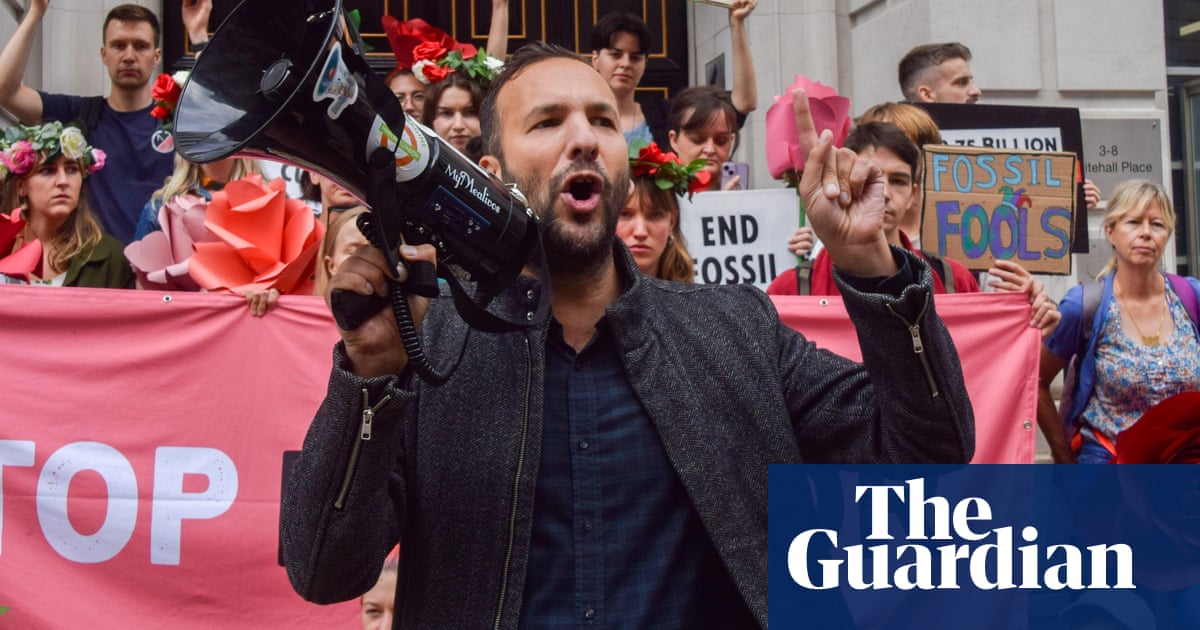So here we are again. Much as was the case in 2021, the last time the Greens picked their leaders, members have a choice that could be broadly presented as the more sober, election-focused professionals versus insurgent activists.
On one side of the equation are Adrian Ramsay and Ellie Chowns, both MPs, and in the case of Ramsay, already a co-leader. Four years ago, he and Carla Denyersaw offAmelia Womack and Tamsin Omond with a self-stated mission to change the party and win elections.
While Womack was hardly an outsider – by then she had been deputy leader for seven years – she was running with Omond, a climate activist who co-founded Extinction Rebellion, and their candidacy was seen as more aimed at younger Greens, and those with an interest in direct activism.
In this summer’s leadership election, for which party members in England and Wales will vote during August, Ramsay and Chowns are up against Zack Polanski, who took over from Womack as deputy leader in 2022 andwants to turn theGreens into what he called an “eco-populism” mass movement.
As a London assembly member who hopes to also become an MP, Polanski is not averse to the electoral route. But his view is that the Greens could and should do more to match the appeal of Reform UK, which is polling at about three times the level of the Greens and has a membership about four times the size.
Ramsay and Chowns are expected to be the favourites and have one particularly strong card to play: they can point to the approach already taken by the outgoing leadership team, and argue that it worked.
When they took over from Siân Berry and Jonathan Bartley, Ramsay and Denyer promised to build up the Greens’ councillor base with a view to expanding the party’s single parliamentary seat.
In 2023 came amore specific promise, to win in four specific Westminster constituencies, a target many observers – and some Greens – viewed at the time as hugely ambitious. But nine months later, at the general election,it happened.
Two of the wins were in Green-friendly, Labour-facing seats – Berry successfully took over Brighton Pavilion from the departing Caroline Lucas, while Denyer, a Bristol councillor since 2015, removed the Labour frontbencher Thangam Debbonaire from Bristol Central.
More notable still were the victories for Ramsay and Chowns, in rural and fundamentally Conservative areas. Ramsay won the newly created constituency of Waveney Valley on the Norfolk-Suffolk border and Chowns overturned a near-25,000 majority in the previously Tory constituency of North Herefordshire.
The pair can thus present themselves to Green voters as exemplars of the party’s long-term mission of building up a Westminster presence via local government, with both serving as councillors in the areas they eventually won.
This approach is being spread more widely, with the Greens holding more than 850 councillors on 180-plus local authorities, and finishing second last year in 40 parliamentary seats.
Polanski’s counterargument is not that this approach is wrong, simply that it should be allied with a less cautious approach to policy and presentation, one that would transmit Green messages to potentially supportive voters with more urgency.
Polanski, who trained as an actor and is happy to take on even hostile broadcast hosts, is arguably a more natural media performer than Ramsay or Chowns. On the debit side for some members will be a policy approach that can raise eyebrows, such as last week’ssuggestion thatthe UK should quit an “out-of-date” Nato.
Which version will win out? In some ways it is hard to predict, not least because this is the first leadership election for four years in a party that normally holds them every two. Ramsay and Denyer were initially given a three-year period as Berry and Bartley broke their tenure midway, with the general election then delaying it again.
And then there is the size of the party – yes, smaller than Reform but now above 60,000. In 2021, Ramsay and Denyer won easily with just 5,000 first-round votes, on a turnout of about 20%. If one side or another can motivate the members, anything could happen.
